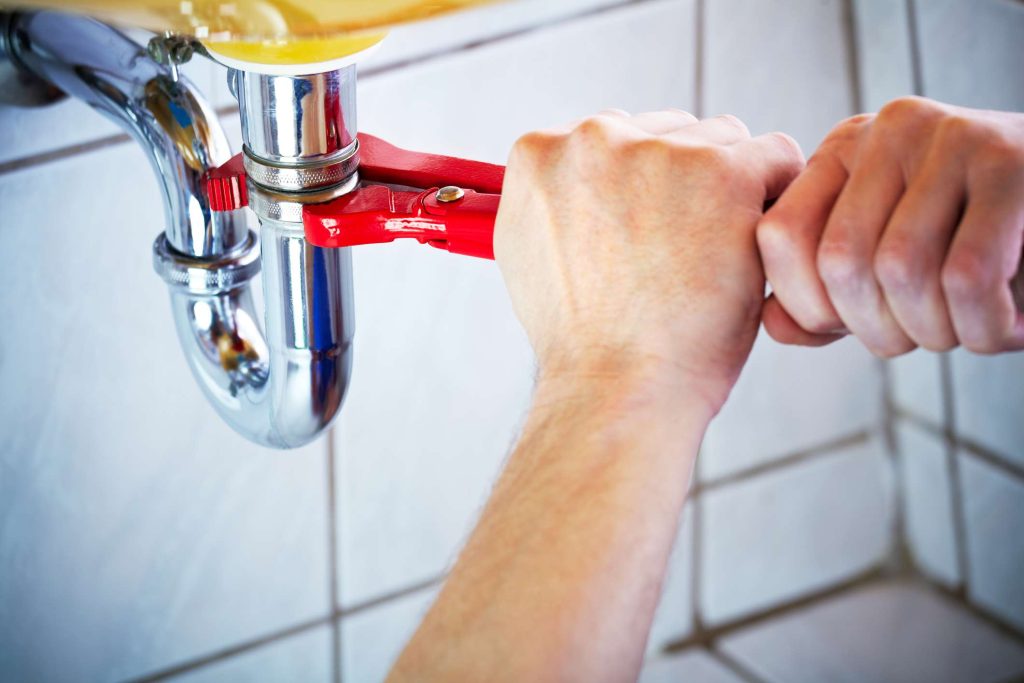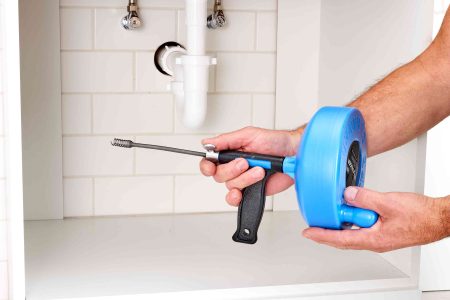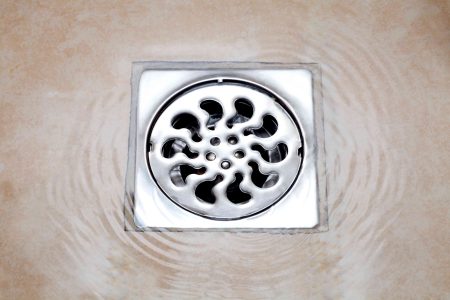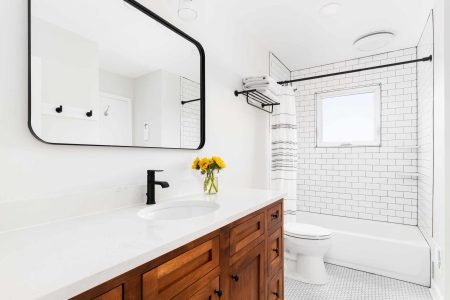When it comes to plumbing projects, DIYers often find that they are learning on the job by jumping into something they aren’t fully prepared to tackle. When this happens, mistakes are made, which can lead to building code violations, faulty fixes, and expensive repairs.
These are the most common plumbing mistakes DIYers and how you can avoid them next time you take on your own project.
Meet the Expert
John Wilson is a plumbing expert and owner of Wilson Plumbing and Heating, a market leading residential plumbing, HVAC, and electrical service provider.
Using Teflon Tape Incorrectly
Teflon tape, also known as PTFE thread tape or plumber’s tape, is used for threaded joints and fittings in a plumbing system. This layer of tape works to fill the gaps in the threads to prevent minor leaks. But if the tape is applied incorrectly or if you use the wrong type of Teflon tape, then it can lead to leaks or even damage to the fitting.
Teflon tape should be wrapped clockwise around the threads, so that when the plumbing fittings are threaded together, the tape tightens around the threads, instead of unwinding or clumping inside the connection. Apply the tape in the same direction you rotate the fitting to tighten it on the threads.
It’s also important to avoid using too much tape as this could put pressure on the fitting, causing it to bend, warp, or even crack. Wrap the tape about two to three times around the threads. For plumbing connections, use the white or pink thread tape, while yellow Teflon tape should be used on gas line connections.
Want more home reno project tips and inspiration? Sign up for our free daily newsletter for the latest how-tos, reno guides, and more!
Improper or Missing Ventilation
Drain lines redirect the flow of wastewater down into the septic system or out to the local wastewater system, but they also rely on a series of pipes that lead up to the roof or out through the attic to provide proper ventilation. A lot of DIYers are unaware that a plumbing system even needs vents.
If the plumbing system does not have appropriate ventilation, it can cause sewage and odors to back up into the sinks, showers, and drains throughout the home. Instead of taking on this work yourself, hire a professional plumber for any major plumbing jobs or changes to the home plumbing infrastructure.
Forcing a Seized Valve
Old gate valves that go for years without being used can often seize up due to rust and calcification. When gentle, consistent pressure is used on the valve, there is a chance that you may be able to loosen it up, but DIYers that are frustrated by being unable to operate one of these valves may try to force the valve open with a wrench or pliers. Applying more muscle only increases the risk of the valve stem simply breaking off.
If you find a valve in this condition, you should replace it as soon as possible to avoid problems in the future. You may be able to use a quick fix solution for the immediate problem by loosening the nut on the valve stem with a wrench or a set of pliers. This will help break up rusting or calcification on the valve stem, allowing the valve handle to rotate. Just make sure to snug up the valve stem nut when you are finished to avoid a leak.
Overtightening Connections
Plumbing fittings are designed to fit together, but some DIYers feel the need for an extra secure connection, so they resort to tightening the fitting as much as physically possible. However, over-tightening the fitting doesn’t make the connection more secure—in fact it can strip the threads, warp the washer, or even cause the fittings to crack, leading to a leak and potential water damage.
When installing a plumbing fitting, start by hand tightening the fitting until it won’t tighten any further, then use a wrench to add about a half turn to snug up the fitting. Also, make sure that you are using the right type and amount of plumber’s tape, and that it is installed in the right direction to prevent the tape from bunching up inside the fitting.
Sweating or Soldering With Water in the Line
Generally, if you’re confident enough to try soldering copper pipe and fittings, you at least have a little experience with hands-on plumbing. However, even experienced DIYers may make the mistake of trying to sweat or solder a pipe while there is a still water in the line. The water needs to be turned off and the remaining water should be drained from the line, otherwise there is a good chance that the joint you are soldering will leak.
Simply torching the pipe until the flux paste is black or completely burned off does nothing to solve the issue, beyond damaging the pipes due to overheating. Instead, drain the water as best as possible through the closest faucet, like a nearby bathroom or laundry sink.
If there is still water in the line, you can use a specialized plug or tool that can cut off the slow leak of water to the area. Alternatively, you can opt for a compression fitting that can be installed without needing to solder.
Using the Wrong Tools
DIYers can tackle a wide range of issues around the home with a few basic tools, but with plumbing, using the wrong tools can cause more harm than good. Plumbers typically have an assortment of tools that make their work easier, more efficient, and less likely to damage the existing plumbing infrastructure.
“Use the right tools and invest in quality equipment designed for plumbing tasks,” Wilson says.
Purchase an assortment of plumbing tools, including a drain snake or auger, a strap wrench, a pipe wrench, Channellock or tongue and groove pliers, pipe cutters, an extendable basin wrench, and more.
Not Turning Off the Water
Turning off the water seems like basic common sense.
“Many DIYers make mistakes, such as not turning off the water supply, which can cause flooding,” Wilson says.
DIYers often underestimate just how much water can flow through an open pipe in a short period of time. Instead, they think they can save time and effort by leaving the water on while quickly swapping in a new valve.
Even with the fastest hands, problems can occur, like a faulty valve or damaged threads, resulting in more and more water pouring into the home. Given the potential for thousands of dollars in water damage, it’s easier to just turn off an isolation valve or shut down the main water valve.
Not Knowing Local Plumbing Codes and Regulations
Plumbers are required to work according to the local plumbing codes and regulations to ensure that the plumbing infrastructure functions properly. However, DIYers rarely check the local plumbing codes, even those directly related to a repair or upgrade they’re working on or plan to take on in the future. This can cause significant problems with the plumbing system and may even create difficulties for the DIYer with the local authorities.
Insurance companies may reject damage claims concerning losses that were a direct result of a DIY construction project, especially if the DIYer did not obtain a permit for the work. To avoid this issue, make sure to thoroughly research the local plumbing codes pertaining to the project.
Missing or Improper Placement of Cleanouts
Clogs are a common plumbing problem that DIYers and pros often need to handle. In most cases a clog can be cleared using a drain snake or drain auger, provided that the drain lines are installed properly according to the local plumbing code. However, DIYers often neglect to install cleanouts, install too few cleanouts, or install cleanouts in improper locations.
Horizontal drainage pipes should have a cleanout installed at the upper terminal. Additional cleanouts should be installed at least every 100 feet for each run of piping more than 100 feet in total length. Cleanouts also need to be provided for each cumulative horizontal change of direction exceeding 135 degrees. By adding these cleanouts, DIYers and plumbers can quickly and easily access clogs anywhere in the drain line with a drain auger.
Underestimating Project Difficulty
Plumbing can seem simple, but there are many skills and subtle nuances that professional plumbers work for years to master. Unfortunately, many DIYers dive into plumbing projects without understanding the true difficulty of the job, which often leads to the DIYer not having the right tools, the right parts, or enough spare parts to be able to finish the project.
“If a job seems too complicated, it’s best to call a professional,” Wilson says. “You should call a professional when the problem is complex, such as major leaks or pipe replacements. If you lack the right tools, as some jobs require specialized equipment, it’s best to seek help. Additionally, if you’re unsure about local codes, a professional will know the regulations and ensure everything is up to standard.”
-
What are the five most common plumbing problems?
The five most common plumbing problems homeowners encounter include a leaking shower or bath, a clogged drain or toilet, low water pressure, a running toilet, and loss of hot water or other water heater problems.
-
What is the 135 rule of plumbing?
The 135 rule of plumbing refers to the placement of drain line cleanouts, which are used to clear any clogs and keep the drains functional. According to the 135 degree rule of plumbing, a cleanout must be present every 100 feet of drainage line and for each cumulative change in pipe direction that exceeds 135 degrees.
Read the full article here









